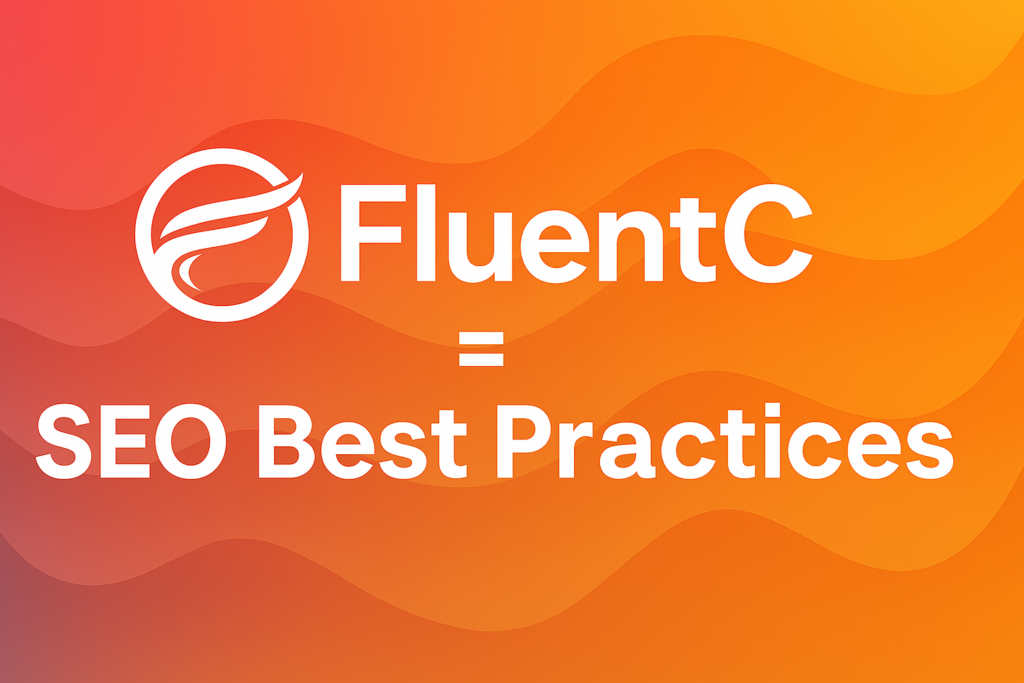When you’re building a multilingual WordPress website, SEO becomes more than just meta descriptions and keywords — it’s about telling Google the right story in every language. And FluentC makes that part effortless.
With automatic hreflang tags, clean localized URLs, and smart integration with major SEO plugins, FluentC handles the technical side of multilingual SEO so your content can shine globally.
Let’s walk through how it works — and what you need to check off for SEO success.

✅ SEO Checklist for WordPress + FluentC
✅ Localized URLs That Search Engines (and Users) Love
FluentC generates language-specific URLs like /fr/about or /de/about using subdirectories — the structure Google recommends for multilingual websites.
Why it matters:
- Helps Google understand language and regional targeting
- Improves click-through rates from the right audience
- Makes sharing and bookmarking language-specific pages easier
✅ Automatic hreflang Tags on Every Page
FluentC automatically inserts <link rel="alternate" hreflang="xx" /> tags on each translated page. These hreflang annotations tell search engines that different URLs are translations of the same content — avoiding duplicate content issues.
📌 Example:/about (English) and /fr/about (French) each reference one another with hreflang.
Google’s documentation on hreflang
✅ Unified Sitemap — No Duplication, No Headaches
Instead of creating a separate sitemap file for every language, FluentC uses a unified sitemap structure. That means:
- One central sitemap index
- Alternate language URLs embedded via hreflang
- Less complexity, better performance
This is the standard practice for multilingual subfolder setups — and it works beautifully with Yoast, Rank Math, and other SEO plugins.
✅ Compatible with Popular SEO Plugins
FluentC seamlessly integrates with:
- Yoast SEO
- Rank Math
- All in One SEO
It translates key SEO elements like:
- Meta titles
- Meta descriptions
- URL slugs
Your SEO plugin continues managing sitemaps and structured data, while FluentC handles the multilingual versions — no additional setup is required. Multilingual WordPress SEO is setup without any hassles
💡 Rank Math and Yoast both rely on hreflang and unified sitemaps — so your translated content stays visible and indexable.
✅ Google-Indexable Dynamic URLs
Even though FluentC dynamically creates translated pages (instead of storing them as static posts), Google still sees them as real pages. Why?
- Each translated page has a unique URL like
/es/about - Hreflang and navigation links point to them
- They return properly translated content on request
This is in line with Google’s indexing expectations, ensuring all your pages are properly crawled and served to the right users.
What You Don’t Need with FluentC
- ❌ No need for separate sitemap files for each language
- ❌ No need to configure hreflang tags manually
- ❌ No extra plugins to make SEO tools work correctly
- ❌ No risk of duplicate or misaligned translated URLs
FluentC = SEO Best Practices Built In
By following Google’s recommendations and working with the tools you already use, FluentC gives your site the multilingual SEO edge — without complexity or code.
Your content gets seen by the right audience, in the right language, and with the right metadata.
Want to learn more?
- Google’s official hreflang guide
- Yoast on multilingual SEO
- Rank Math on hreflang and multilingual structure
Ready to go global the right way?
Explore how FluentC helps your WordPress site grow across languages →

